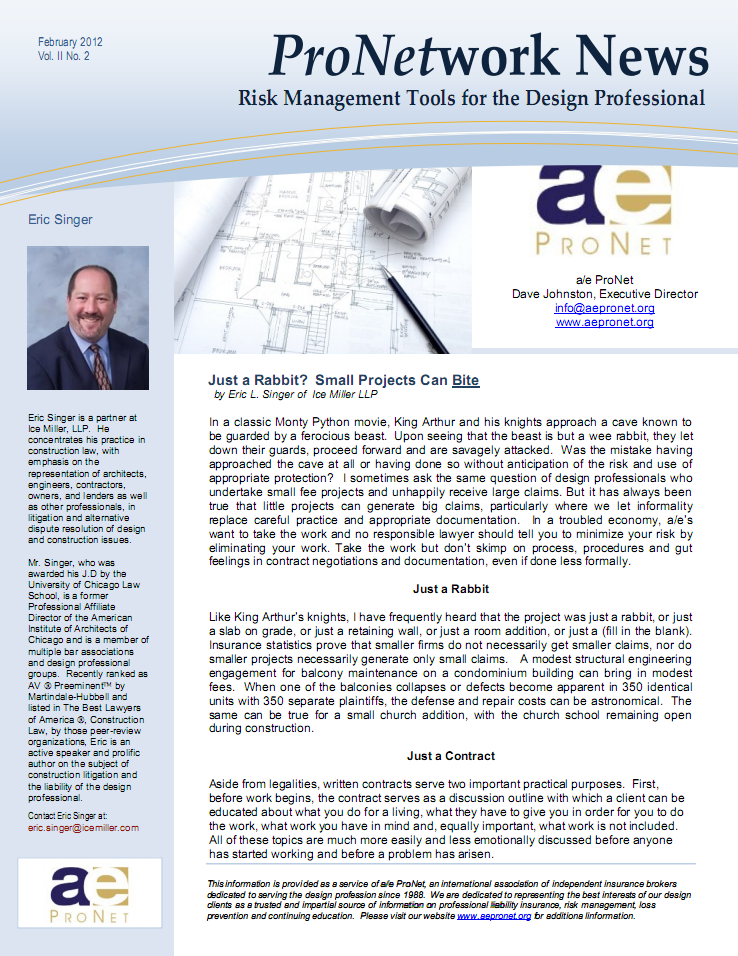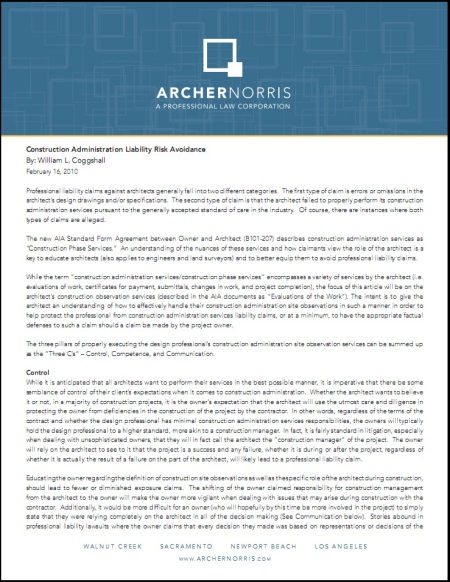 The most common refrain I hear when talking to clients about Contract Review and Administration is: “I only sign a standard contract.”
The most common refrain I hear when talking to clients about Contract Review and Administration is: “I only sign a standard contract.”
Most clients feel there is no reason for contracts to be reviewed prior to signing, because they only sign a standard contract. Unfortunately, the only standard contract I ever see is one in which an owner or client uses and wants their consultants and contractors to sign. Ironically, one of the few things that makes any contract a “standard contract”…is the omni-present and onerous broad hold harmless/indemnity and defense clause.
Contract Review and Administration is probably one of the most important aspects of a prudent risk management and loss prevention program. A contract that any Contractor or Consultant signs should identify their rights and responsibilities to the owner and third parties. All of this should be determined at the “request-for-proposal” stage. If done here…it allows the Contractor or Consultant to identify, evaluate and treat the risks in the Owner or Client standard contract. Please remember that no one is putting a gun to the Contractor’s or Consultant’s head when he or she signs the contract; so it’s absolutely essential that the Contractor or Consultant knows what he is signing and what his rights and responsibilities are when negotiating for future work.
The prudent Contractor or Consultant should discuss all contracts with their counsel and agent before signing. Some general practice tips to consider when reviewing contracts are:
- Scope of services: Think about whether the contract is exactly what you thought is was going to be in terms of encompassing more or less services, added responsibilities or services outside your area of expertise. It is also wise to describe things you are not doing to reduce the potential for misunderstandings.
- Change orders: Find out if the Owner is allowed to change the scope of work once under way, and, if so, under what conditions. For instance, look at what input or options you have and what time frame you have to consider this.
- Warranties and Guarantees and Performance Standards: First, you have to know if there are any. Try not to assume any and don’t agree to unreasonable ones…if you must assume any! Don’t forget that all professional liability policies exclude the assumption of liability policies which turns out to be a warranty or guarantee or performance guarantees.
- Compliance with all laws, regulations, etc.: These responsibilities can be difficult to live up to since no one knows what all the laws, regulations, ordinances, rules, etc. are, much less how to comply with all of them. Continue reading “Is there such a thing as a Standard Contract?”









